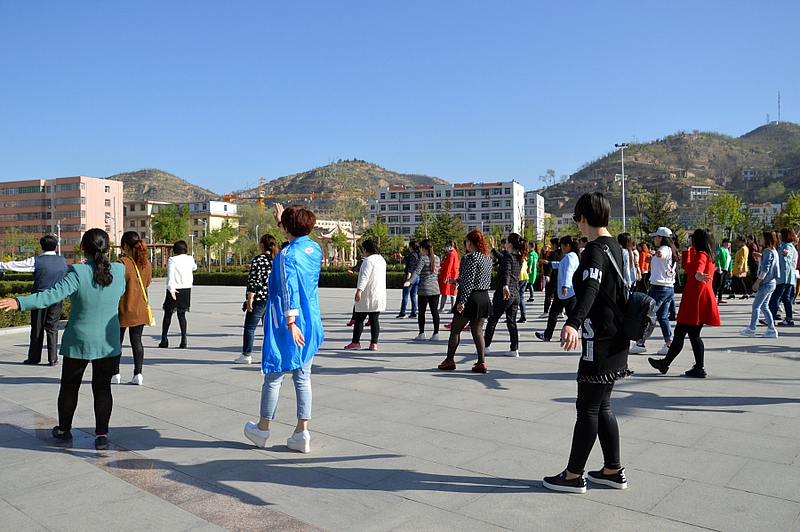When the Suixi Office was established in 1942, there was a population of 91,170 in this area. In 1944, there were 19,322 households with 104,286 people including 53,148 males and 51,138 females; in 1945, there were 22,290 households with 113,799 people including 58,315 males and 55,484 females; in 1947, there were 26,290 households with 126,456 people.
In 1949, Zizhou County had 23,953 households with 106,159 people; in 1959, there were 31,502 households with 148,581 people; in 1969, there were 42981 households with 186,650 people; in 1979, there were 47,487 households with 205,967 people; in 1989, it reached 65,394 households with 257,842 people. Compared with 1949. An increase of 143%, averagely annual net increase is 3700 people.
The natural population growth rate in 1980 was 14.43‰, the natural population growth rate in 1983 was 18.68‰, the birth rate in 1987 was 35.1‰, the natural population growth rate was 29.6‰, and the multiple birth rate was over 40%.
In 2013, Zizhou County had a total population of 309,000, including an agricultural population of 278,800.
At the end of 2016, the county had 1,15057 households with a total population of 303,708, among which 161,943 were males, accounting for 53.32% of the total population; 141,765 were females, accounting for 46.68% of the total population. The county has an urban population of 62,965 people, and a rural population of 240,743 people. At the end of 2016, the county's permanent population was 170,300, and the urbanization rate was 36.16%. The birth rate was 12.02‰; the death rate was 7.31‰; the natural growth rate was 4.71‰.
At the end of 2017, the county had 115,734 households with a total population of 303,881, among which 162,266 were males, accounting for 53.39% of the total population and 141,615 were females, accounting for 46.61% of the total population. The county has an urban population of 71,642 people and a rural population of 232,239 people. At the end of 2017, the county's permanent population was 165,300, and the urbanization rate was 38%. The birth rate was 13.79‰, the mortality rate was 7.98‰ and the natural growth rate was 5.81‰.
In 2017, the per capita disposable income of urban permanent residents was 28,113 yuan, a year-on-year increase of 9.1%. The per capita disposable income of rural residents was 896 yuan, an increase of 9.4%.
In 2017, 15 poverty-stricken villages were accurately exited, reducing 3,474 households and 15,011 people in poverty.
In 2017, 7,576 people participated in the pension insurance for urban employees and the number of urban and rural residents participating in the pension insurance reached 136,535. The number of people participating in basic medical insurance was 25,806, among which 12,581 were urban employees who participated in basic medical insurance, 1,325 were urban residents who participated in basic medical insurance, and 256,607 were in rural new rural cooperative medical insurance. The basic social security coverage rate reached 98.0%.

At the end of 2018, there were 114,955 households in the county with a total population of 299,490, among which 160,475 were males, accounting for 53.6% of the total population and 139,015 were females, accounting for 46.4% of the total population. The county has an urban population of 78,739 and a rural population of 220,751. At the end of 2018, the county's permanent population was 163,900 and the urbanization rate was 40.6%. The birth rate was 11.48‰, the mortality rate was 7.03‰; the natural growth rate was 4.46‰.
In 2018, the per capita disposable income of urban permanent residents was 25,198 yuan, a year-on-year increase of 8.4%. The per capita disposable income of rural residents was 9713 yuan, an increase of 9.4%.
In 2018, 63 poverty-stricken villages had accurately exited, reducing 7,364 households and 22,472 people in poverty.
In 2018, 8,299 people participated in the pension insurance for urban employees, and the number of people participating in the pension insurance for urban and rural residents reached 134,530. The number of people participating in basic medical insurance was 26,757, among which 13,298 were urban employees who participated in basic medical insurance, 13,459 were urban residents who participated in basic medical insurance, and 249,426 were in rural new rural medical insurance. The basic social security coverage rate reached 99.6%.
At the end of 2019, there were 114,566 households in the county with a total population of 296,462, among which 159,425 were males, accounting for 53.78% of the total population and 137,037 were females, accounting for 46.22% of the total population. The county has an urban population of 77,227 and a rural population of 219,235. At the end of 2019, the county's permanent population was 160,500, and the urbanization rate was 41.89%. The birth rate was 11.39‰; the death rate was 7.23‰; the natural growth rate was 4.16‰.
In 2019, the per capita disposable income of all residents was 16,200 yuan, a year-on-year increase of 9.5%. Divided by permanent residence, the per capita disposable income of urban permanent residents was 27,354 yuan, a year-on-year increase of 8.6%. The per capita disposable income of rural residents was 10,680 yuan, an increase of 10.0%.
In 2019, 10 poverty-stricken villages had accurately exited, reducing 763 households with 2,498 people in poverty.
In 2019, 8,863 people participated in the pension insurance for urban employees and the number of people participated in the pension insurance for urban and rural residents reached 136086. The number of people participating in basic medical insurance was 26,735, among which 13,526 were urban employees who participated in basic medical insurance, 13,209 were urban residents who participated in basic medical insurance, and 246,920 were in rural new rural cooperative medical insurance.

